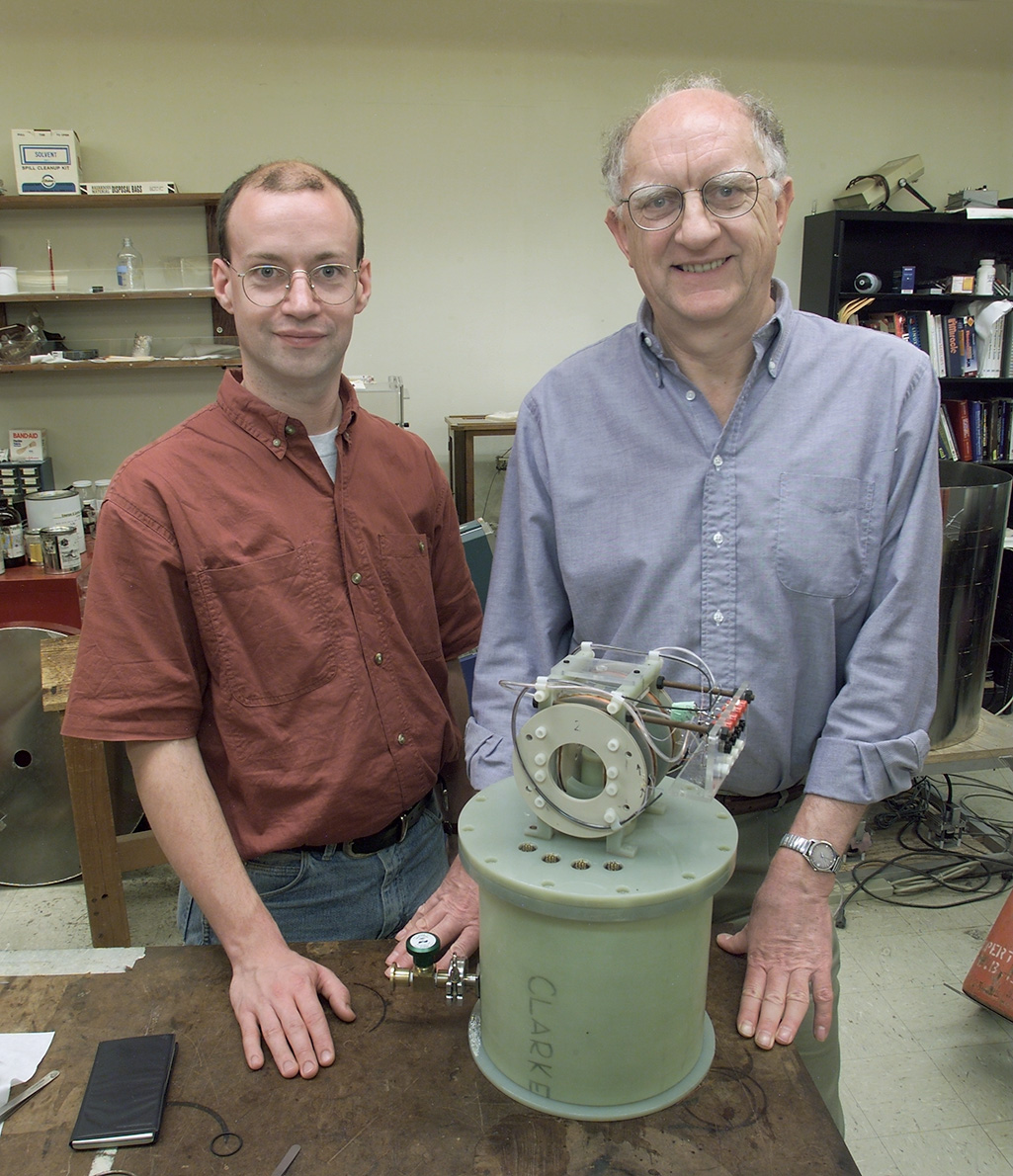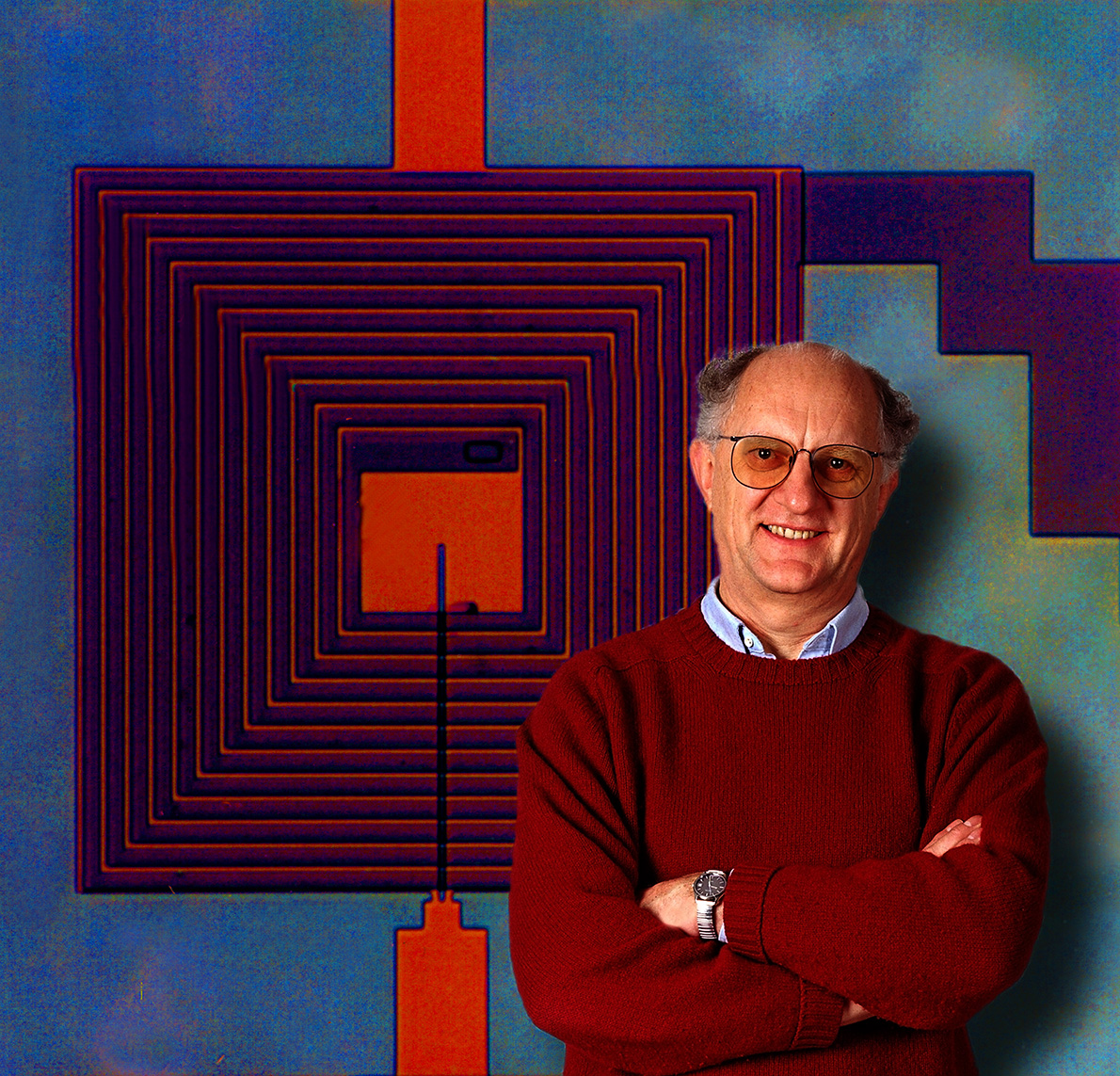John Clarke, a former scientist at the Department of Energy's Lawrence Berkeley National Laboratory (Berkeley Lab) and an emeritus professor of physics at the University of California, Berkeley, has been awarded the 2025 Nobel Prize in Physics "for the discovery of macroscopic quantum mechanical tunnelling and energy quantisation in an electric circuit." He shares the prize with two other physicists, Michel H. Devoret, a professor of physics at UC Santa Barbara and an emeritus professor of applied physics at Yale University, and John M. Martinis, an emeritus professor of physics at UC Santa Barbara.
"Today's announcement of the Nobel Prize in Physics is well deserved recognition of this groundbreaking research funded by the Office of Science," said Under Secretary for Science Dr. Darío Gil. "The laureates' outstanding impact on quantum research will continue to shape the field through DOE's National Quantum Information Sciences Research Centers. We are so proud to support this amazing research."
The award to Clarke brings the number of Nobel Prizes associated with Berkeley Lab scientists to 17.
Clarke joined Berkeley Lab in 1969 and retired as a faculty senior scientist in the Materials Sciences Division in 2010. At the time of their prize-winning research, Martinis worked as a graduate student researcher, and Devoret as a postdoctoral scholar, in the Clarke group at Berkeley Lab and UC Berkeley.
"This year's Nobel Prize in Physics has provided opportunities for developing the next generation of quantum technology, including quantum cryptography, quantum computers, and quantum sensors," the Nobel committee wrote in its summary of the research.
"I was thrilled to hear that the Nobel was awarded to John Clarke, John Martinis, and Michel Devoret, all of whom have been leading the second quantum revolution we are now enjoying," said Berkeley Lab Director Mike Witherell. "John Clarke was a leading faculty scientist at Berkeley Lab for many years, supported by the Department of Energy's Basic Energy Sciences program. This is great news."

John Clarke posing next to a SQUID detector in 2010. (Credit: Roy Kaltschmidt/Berkeley Lab)
Quantum tunneling is the ability of microscopic particles, such as electrons, to move or tunnel through barriers that, according to classical physics, they should not be able to breach. The three Nobel laureates demonstrated this effect at a macroscopic level in the early 1980s in a simple electrical circuit incorporating a superconductor, a milestone that set the stage for the development of quantum devices.
"Quantum mechanics allows a particle to move straight through a barrier, using a process called tunnelling. As soon as large numbers of particles are involved, quantum mechanical effects usually become insignificant. The laureates' experiments demonstrated that quantum mechanical properties can be made concrete on a macroscopic scale," the Nobel committee added in its summary of the research.
This simple circuit is the foundation for an ultrasensitive detector called a SQUID or a superconducting quantum interference device. Clarke has pioneered and used SQUIDs in many applications, including detection of nuclear magnetic resonance (NMR) signals at ultralow frequencies; geophysics; nondestructive evaluation of materials; biosensors; detection of dark matter; and observing qubits, the fundamental unit of information in a quantum computer.

Digital composite of John Clarke posing next to a SQUID detector illustration. (Credit: Roy Kaltschmidt/Berkeley Lab)
As noted in a 2018 DOE Basic Energy Sciences (BES) report, SQUIDs can detect magnetic fields 100 billion times smaller than those generated by an ordinary refrigerator magnet, and have been widely used in mineral exploration and for imaging the magnetic fields from human brains. SQUIDS are based on an earlier discovery that electrons in a superconducting material can tunnel through a neighboring layer of an insulating material in a second superconductor called a Josephson junction. BES-supported research into the Josephson effect underlying these junctions led to Clarke's discovery that such devices exhibited multiple quantum states and macroscopic tunneling, and now underlies some of the most promising routes to quantum computing, including candidate materials for constructing qubits.
Clarke is a Fellow of the Royal Society of London, the American Physical Society, the American Association for the Advancement of Science, and the Institute of Physics (UK). He is also an Honorary Fellow of Christ's College, Cambridge, and a member of the National Academy of Sciences. His honors include the University of California's Distinguished Teaching Award, 1987 California Scientist of the Year, and numerous technology awards including the Fritz London Memorial Award for low temperature physics and the National Academy of Sciences Comstock Prize in physics. In 2002, he was named to the first annual Scientific American 50 list.
For more details about the Nobel Prize, see the UC Berkeley news release.






